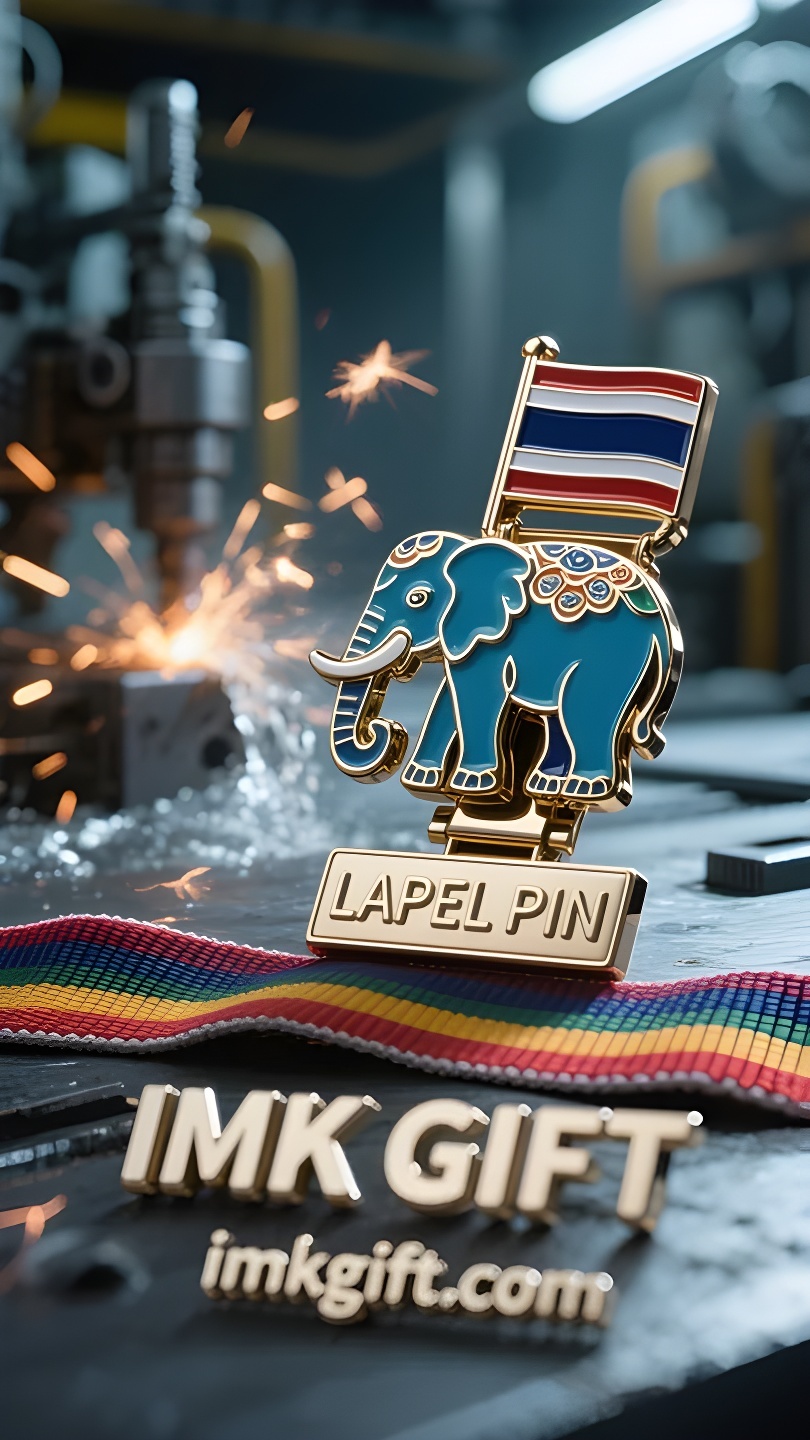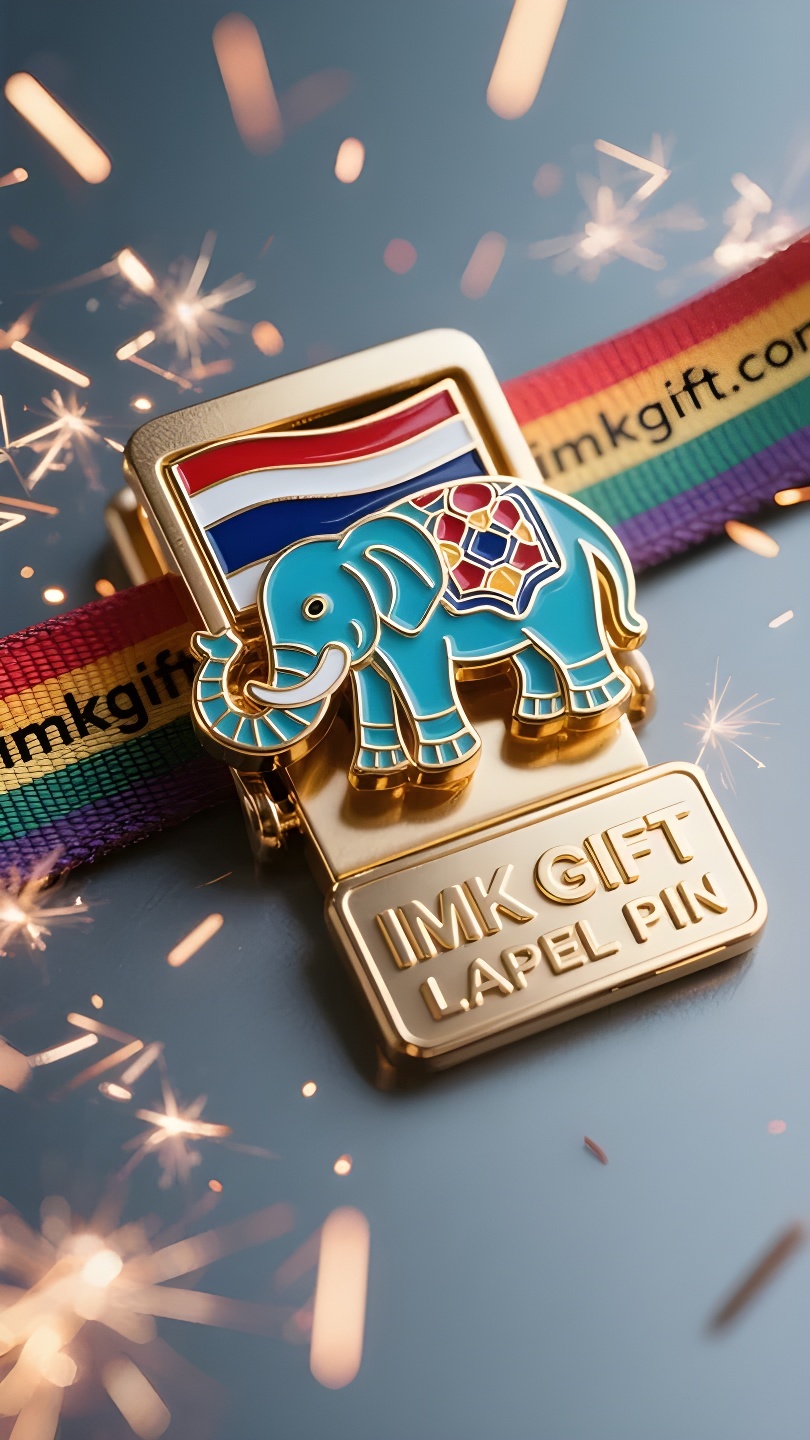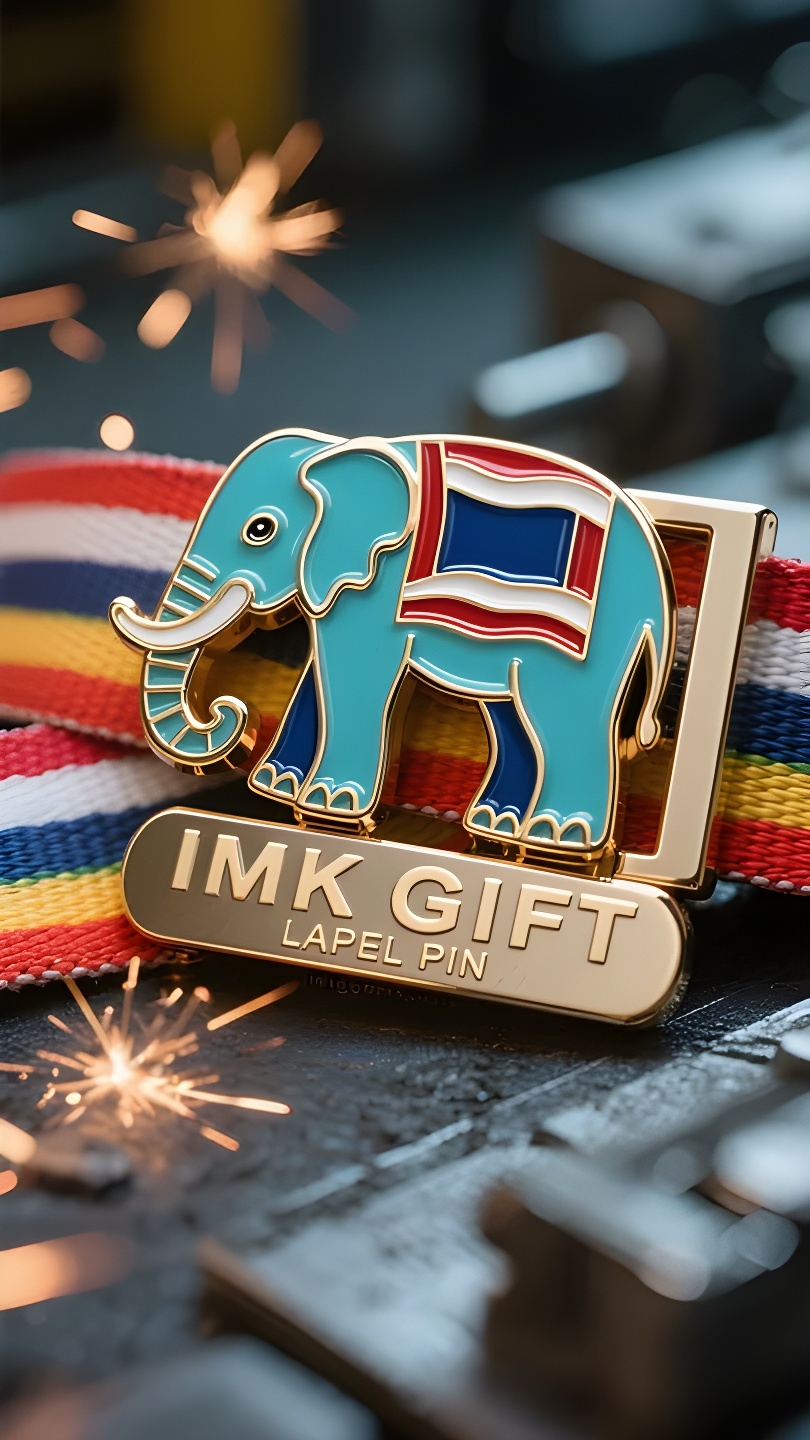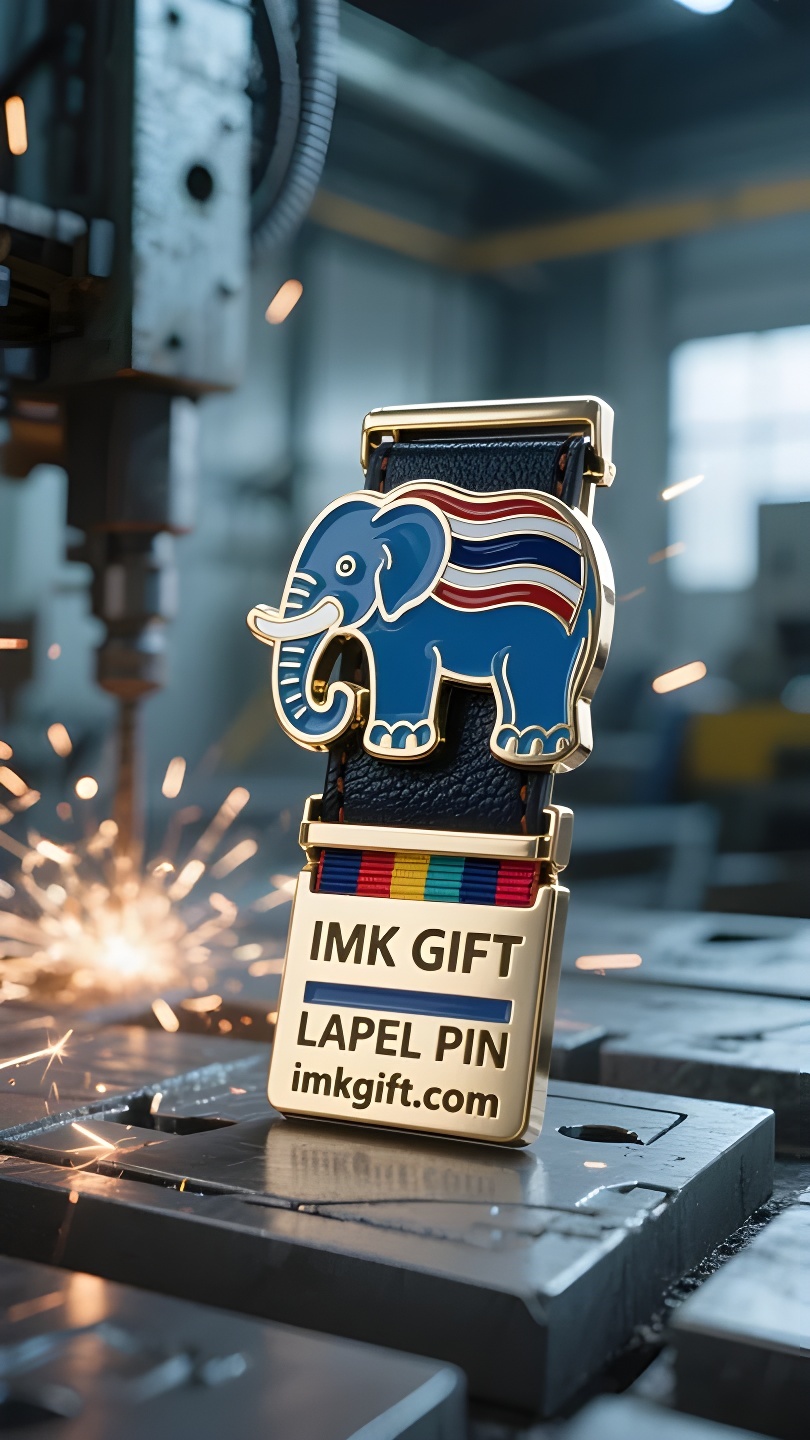in987-ตราส-ญล-กษณ-ประจำชาต-ในห-วเข-มข-ดร-ปช-าง
▼
ในเดือนตุลาคม ประเทศไทยเป็นวันปิยะมหาราช ในขณะที่ธงชาติสีแดง ขาว และน้ำเงินโบกสะบัด หัวเข็มขัดรูปช้างบนเครื่องแต่งกายประจำชาติก็สะท้อนให้เห็นถึงจรรยาบรรณทางจิตวิญญาณของชาตินี้ ฉันทลักษณ์ช้างค้ำผืนป่าด้วยหลังกว้าง คนไทยก็สร้างรากฐานอารยธรรมด้วยความศรัทธาอันแรงกล้าและความรักชาติเช่นกัน สีแดงในธงชาติเป็นสัญลักษณ์ของความศรัทธาในชาติ สีขาวหมายถึงความบริสุทธิ์ของศาสนา และสีน้ำเงินเปรียบเสมือนท้องฟ้าที่ราชวงศ์ปกป้องดูแลประชาชนทุกคน คุณค่าสามประการของ “บ้านเมือง-ศรัทธา-พระมหากษัตริย์” ได้ถูกถ่ายทอดลงในตัวชาวบ้านโดยผ่านรูปช้าง หัวเข็มขัดทองแดงแบบดั้งเดิมมักแกะสลักเป็นรูปช้างคุกเข่าโดยมีงวงขดตัวเป็นดอกบัว เป็นสัญลักษณ์ของการอยู่ร่วมกันระหว่างความอ่อนน้อมถ่อมตนและความแข็งแกร่ง เช่นเดียวกับชาวไทยที่ปกป้องเปลวไฟแห่งอารยธรรมด้วยทัศนคติที่ยืดหยุ่นตลอดช่วงประวัติศาสตร์ที่ผ่านมา หัวเข็มขัดไม่เพียงแต่ช่วยรัดเสื้อผ้าเท่านั้น แต่ยังมีความรับผิดชอบในการส่งต่อจากรุ่นสู่รุ่นอีกด้วย ภาพช้างแบกเจดีย์ไว้บนหลังสื่อถึงภูมิปัญญาการเอาตัวรอดที่ว่า “แบกภาระและก้าวเดินต่อไปอย่างมั่นคง” เมื่อคนรุ่นใหม่สวมหัวเข็มขัดเก่าของพ่อแม่ พวกเขาไม่ได้แค่สืบทอดความทรงจำในครอบครัวเท่านั้น แต่ยังเป็นการแสดงคำสาบานเงียบๆ ที่จะปกป้องประเทศและสืบสานวัฒนธรรมอีกด้วย จากกองทัพช้างแห่งราชวงศ์สุโขทัยสู่มีดแกะสลักของช่างฝีมือร่วมสมัย แผ่นดินแห่งนี้เชื่อเสมอมาว่าอำนาจที่แท้จริงไม่ได้อยู่ที่การพิชิต แต่คือการยืนหยัดด้วยความศรัทธาด้วยหัวใจที่อ่อนน้อม เปรียบเสมือนช้างที่วัดพื้นพิภพด้วยรอยเท้า คนไทยก็ใช้มือทอสัญลักษณ์แห่งโชคชะตาที่ผสมผสานระหว่างประเพณีและความทันสมัยเข้าด้วยกัน
In October, Thailand ushered in Chulalongkorn’s anniversary. As the red, white and blue national flag fluttered, the elephant belt buckles on traditional clothing reflected the spiritual code of this nation. Just as elephants use their broad backs to hold up the jungle, Thai people use their devout faith and patriotism to build the foundation of civilization. The red in the national flag symbolizes the passion of the people, the white represents the purity of religion, and the blue is like the sky where the royal family protects the people. This trinity of values of “country-faith-monarch” is embodied in the folk with the elephant totem. Traditional copper belt buckles are often carved with kneeling elephants, with their long trunks curled up in lotus, implying the coexistence of humility and strength – just as Thai people have always protected the flame of civilization with a flexible attitude in the torrent of history. A belt buckle not only holds clothes, but also the responsibility of intergenerational inheritance. The image of an elephant carrying a pagoda on its back implicitly coincides with the survival wisdom of “shouldering the mission and moving forward steadily.” When modern young people put on their parents’ old belt buckles, they are not only taking over family memories, but also a silent oath to protect the country and continue the culture. From the elephant army of the Sukhothai Dynasty to the carving knives of contemporary craftsmen, this land has always believed that true power lies not in conquest, but in holding up faith with a humble heart. Just as elephants measure the earth with their footsteps, Thai people weave the destiny totem of tradition and modernity with their hands.
十月的泰国迎来朱拉隆功纪念日,红白蓝三色国旗飘扬之际,传统服饰上的大象皮带扣折射着这个民族的精神密码。正如大象用宽厚脊背托起丛林,泰国人用虔诚信仰与家国情怀筑起文明根基。
国旗中的红色象征国民的热血,白色代表宗教的纯净,蓝色则如王室庇护万民的苍穹。这种”国家-信仰-君主”三位一体的价值观,在民间以大象图腾具象化。传统铜制皮带扣常雕刻跪姿大象,长鼻卷起莲花,寓意谦卑与力量共生——正如泰国人在历史洪流中始终以柔韧姿态守护文明火种。
一枚皮带扣,扣住的不只是衣衫,更是代际传承的责任。大象背负佛塔的形象,暗合着”肩负使命,稳步前行”的生存智慧。当现代青年系上父辈的旧皮带扣,接过的不仅是家族记忆,更是守护国土、延续文化的无声誓言。
从素可泰王朝的象军到当代工匠的刻刀,这片土地始终相信:真正的力量不在于征服,而在于以谦卑之心托起信仰。正如大象用脚步丈量大地,泰国人用双手编织着传统与现代交织的命运图腾。
▼
Contact Us
📞 Tel: +0086-760-85286839
📧 Email: sales3@imkgift.com








